Local News
17 cases of Covid now at Simkin Centre
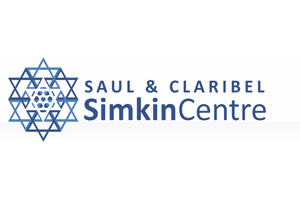 Updated April 2 The past few days have seen a resurgence of Covid at the Simkin Centre, although the current variant affecting residents, Omicron B-1 is milder than the previous Delta and Alpha variants. According to information provided on the Simkin Centre Facebook page, 14 residents on Simkin 2 are currently testing positive for Covid, while three residents on Weinberg 1 are also testing positive.
Updated April 2 The past few days have seen a resurgence of Covid at the Simkin Centre, although the current variant affecting residents, Omicron B-1 is milder than the previous Delta and Alpha variants. According to information provided on the Simkin Centre Facebook page, 14 residents on Simkin 2 are currently testing positive for Covid, while three residents on Weinberg 1 are also testing positive.
Previously, seven residents on Weinberg 1 had tested positive but, as of March 28, four have recovered. The outbreak on Simkin 2 was first made public on March 28. At that point only one resident on Simkin 2 tested positive. The fact that the outbreak has now spread to 13 other residents is an indication how virulent the current strain of Covid is.
The April 1 Simkin Centre Facebook post warns that “Designated Caregivers on Simkin 2 are welcome to visit at their own risk. Personal protective equipment will be provided and must be worn during your visit.”
The post goes on to say that “With the rising number of Resident and staff cases we are experiencing significant staffing shortages. We want to thank the Designated Caregivers for their assistance during this challenging time.”
*****
Poarws Jan. 17 A total of 20 Residents have tested positive for Covid. Of those 20, 15 have recovered. The remainder are in the Covid isolation unit. In addition, two more staff have tested positive, bringing the total number of staff who have tested positive to 31. Twenty-six of the staff have returned to work.
Updated Jan. 13 Three more Residents have now tested positive for Covid. The total number of Residents who are now in the Covid isolation unit is up to 15. One Resident has recovered and has been released from the isolation unit.
Updated Jan. 11 Of the 29 staff who had testd positive for Covid, 26 have now returned to work following the mandated five-day quarantine period. One more Resident has tested positive for Covid. The first Resident to test postive for Covid has been released from the Covid isolation unit.
Updated Jan. 10 On Sunday, Jan. 9 the Simkin Centre reported that a total of 10 Residents have now tested positive for Covid. On Jan. 8 3 Residents had been reported as having tested positive. The total number of Residents who have now tested positive stands at 10. The Centre reports that additional tests for some Residents on Weinberg 3 have been administered.
There are no additional reports of staff having tested positive. Twenty-six staff will have recovered and were expected to return to work today.
Posted Jan. 7
A total of 29 staff mmebers have tested positive for Covid. By Monday we expect 20 staff will have recovered and returned to work.Staffing at the moment has stabilized.
There are no new Resident cases of Covid to report. The one Resident with Covid is stable.
Posted Jan. 4
Some staff who tested postive are now back at work. A total of 24 staff have tested positive, with 8 having completed their isolation period.. So far, still only one Resident has tested positive.
Posted Jan. 3
An additional three staff cases have now been identifed at the Simkin Centre, bringing the total number of staff affected to 16. There are no further Resident cases to report.
The Simkin Centre welcomed back Designated Caregivers today. Only one Designated Caregiver is allowed to visit at a time.
Posted Jan. 2
The Simkin Centre now reports that three more staff have tested positive for Covid, bringing the total number of staff affected to 13.
As well, late in the evening of December 31, the Centre was advised that a Resident from Simkin 2 tested positive for Covid.
According to the Centre, “the Resident has been transferred to our Covid Isolation Unit and is receiving excellent care. Family members of Residents living on the affected unit will be contacted. All visitations, including designated family care givers, have. been suspended until further notice.
Posted Jan. 1:
The Simkin Centre now reports that 10 staff members have tested positive for Covid. According to the Centre, “One staff member did not work during their infectious period.”
There are no Resident cases at this time.
Posted Dec. 31:
The Simkin Centre now reports that a total of seven staff members have tested positive for Covid. As well, the Centre reports that “We have also had visitors adivse us that they have tested positive after being at our Centre.”
The Centre also reports that they “are experiencing staffing shortages in all departments.” As a result the Centre has implemented the following steps:
1. Tub baths and showers will be suspended. Residents will be receiving sponge baths instead.
2. Bed linens will be changed only when wet or soiled.
3. Beds will be clean however not necessarily “made” as per usual expectations.
4. Resident personal clothing may be worn for more than one day at a time unless wet or soiled prior to sending for laundering.
5. Residents may be dressed in hospital gowns to facilitate expedited care delivery.
6. Pandemic meal plans will be iniitiated. This includes the use of disposable clothes, standardized menu items such as pureed soup and dessert for all residents.
7. Housekeeping services have been prioritized for Resident areas and high touch surfaces.
As well, the Simkin Centre issued the following all for help on their Facebook page:
Are you a retired health care aide who is interested in coming back to work at the Simkin Centre to assist with our staffing shortages during our outbreak? If so please reach out to hr@simkincentre.ca as soon as possible. We need your experience!
Posted Dec. 30
On December 26 the Simkin Centre reported that “we were notified of a staff member testing positive for Covid-19 who worked on Simkin 2 night shift on December 22nd…”
Then, on December 29 the Simkin Centre issued another report: “Today we were notified of two more staff testing positive for Covid-19 who worked on Weinberg 3 and Simkin 2. Their cases are linked which means we are now in a Covid-19 Outbreak….
“We have no Resident cases at this time. Residents on affected units will be closely monitored and tested if they develop any symptons. The visting restrictions being implemented tomorrw will remain in place.”
To read the complete list of rules that are now in place at the Simkin Centre go to https://mailchi.mp/simkincentre/volume-1-issue-10713006?fbclid=IwAR2mW0ZZgLlC89EM0V7yuK97OFQXGPjFedGQaEMK7N1jJVtQy6BUJTpBHuA
Local News
Thank you to the community from the Chesed Shel Emes
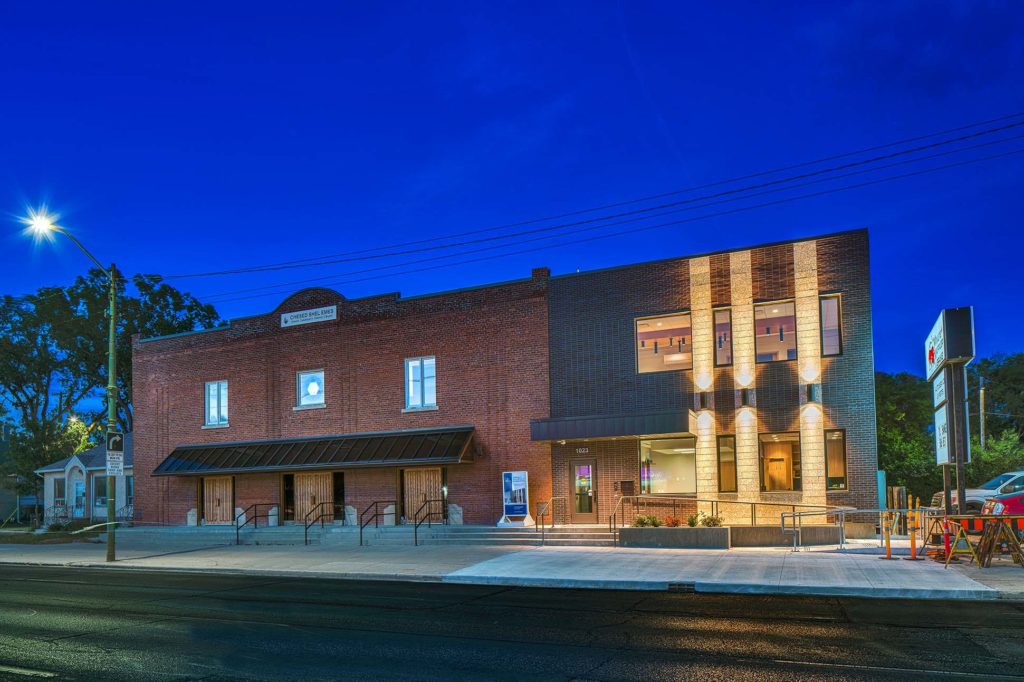
We’re delighted to share a major milestone in our Capital Campaign, “Building on our Tradition.” Launched in November 2018, this campaign aimed to replace our outdated facility with a modern space tailored to our unique needs. Our new building is designed with ritual at its core, featuring ample preparation space, Shomer space, and storage, creating a warm and welcoming environment for our community during times of need.
We’re grateful to the nearly 1,000 generous donors who contributed over $4 million towards our new facility. A $750,000 mortgage will be retired in November 2025, completing this monumental project in just seven years.
We’re also thrilled to announce that our Chesed Shel Emes Endowment Fund has grown tenfold, from $15,000 to $150,000, thanks to you, the Jewish Foundation of Manitoba’s FundMatch program, and Million Dollar Match initiative in 2024. Our fund helps ensure that everyone can have a dignified Jewish funeral regardless of financial need.
As we look to the future, our goal remains to ensure the Chevra Kadisha continues to serve our community for generations to come. Our focus now shifts to replenishing our savings account and growing our JFM Endowment fund.
We’re deeply grateful for your support over the past several years.
It’s our privilege to serve our community with care and compassion.
With sincere appreciation,
Campaign cabinet: Hillel Kravetsky, Gerry Pritchard, Stuart Pudavick,
Jack Solomon, and Rena Boroditsky
Murray S. Greenfield, President
Local News
Winnipeg Beach Synagogue about to celebrate 75th anniversary
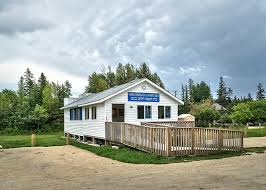
By BERNIE BELLAN (July 13) In 1950 a group of cottage owners at Winnipeg Beach took it upon themselves to relocate a one-room schoolhouse that was in the Beausejour area to Winnipeg Beach where it became the beach synagogue at the corner of Hazel and Grove.
There it stayed until 1998 when it was moved to its current location at Camp Massad.
On August 2nd members of the synagogue will be holding a 75th anniversary celebration.
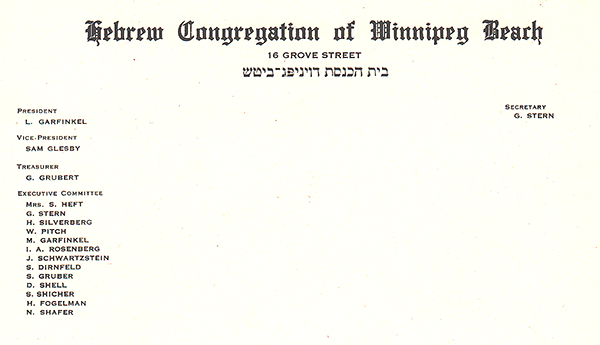
As part of the celebration anyone who is a descendant or relative of any of the original members of the first executive committee (as seen in the photo here) is invited to attend the synagogue that morning.
If you are a relative please contact Abe Borzykowski at wpgbeachshule@shaw.ca or aborzykowski@shaw.ca to let Abe know you might be attending or for more information about the 75th anniversary celebration.
We will soon be publishing a story about the history of the beach synagogue, which is something I’ve been writing about for over 25 years.
Local News
Vickar Family cuts ribbon on new Tova Vickar and Family Childcare Centre
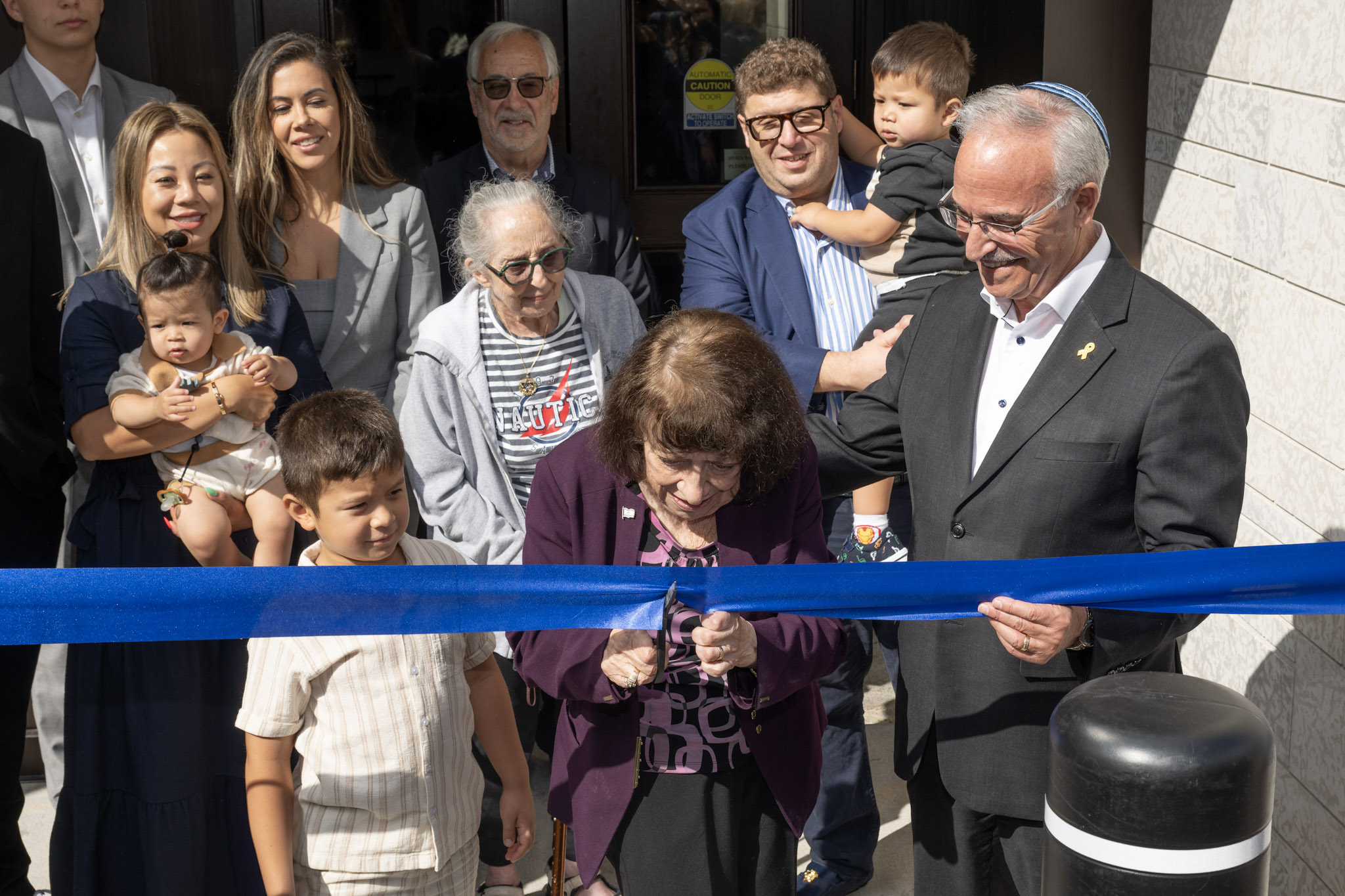
By MYRON LOVE In the words of Larry Vickar, the Shaarey Zedek’s successful Dor V’ Dor Campaign “is not only a renewal of the synagogue but truly a renewal movement of Jewish life in our community.”An integral part of that renewal movement was the creation of a daycare centre within the expanded synagogue. On Monday, June 23, Larry and Tova Vickar cut the ribbon, thereby officially opening the Tova Vickar and Family Childcare Centre in the presence of 100 of their family members, friends and other supporters of the project.
The short program preceding the morning ribbon-cutting began with a continental breakfast followed by a welcome by both Fanny Levy, Shaarey Zedek’s Board President, and Executive Director Dr. Rena Secter Elbaze. In Elbaze’s remarks, she noted that Larry and Tova wanted their family (including son Stephen and family, who flew in from Florida) and friends at the event to celebrate the opening of the Tova Vickar and Family Childcare Centre, “not because of the accolades, but because, as Larry put it, he hopes that their investment in the congregation will inspire others to do the same.”
“When Larry and I spoke about what this gift meant to him and the message he wanted people to take away,” she continued, “I couldn’t help but connect it to the teachings of Reb Zalman Schachter-Shalomi whose book – Age-ing to Sage-ing – changes the whole way we look at the concept of ageing and basing it on our ancestral teachings.”
She explained that his concept of “Sage-ing” is based on three key ideas – Discover your meaning and purpose; accept our mortality and think about the legacy you want to leave.
“Larry spoke about these exact concepts when we met,” she said.
Elbaze also noted the presence of Shaarey Zedek’s newly-arrived senior Rabbi Carnie Rose, former Rabbi Alan Green, and area MLAs Mike Moroz and Carla Compton.
Larry Vickar expressed his great appreciation for all those in attendance. “Tova and I are deeply moved to stand here with you today for this important milestone in our community”, he said. “We are grateful to be surrounded by all of you, the people we care about, our family and friends… you who have touched our lives and played some part in our journey.”
